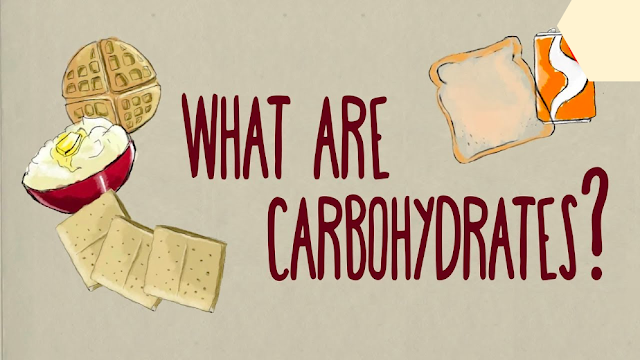Which one of these contains the least carbs?
A bread roll Serving of rice? or a soda can?
It’s a ruse, that inquiry. In terms of lipids, vitamins and other nutritional components. They may vary but when it comes to carbohydrates, they are essentially the same.
What does that exactly entail for your diet, then?
To begin with, the nutritional term for sugars and molecules that your body breaks down to create sugars is carbohydrate. According to their structural complexity, carbohydrates can be simple or complicated. This is a monosaccharide, or simple sugar. Simple sugars include galactose, fructose, and glucose. When you combine two of them, you get a disaccharide, such as lactose, maltose, or sucrose. Contrarily, complex carbohydrates are made up of three or more simple sugars linked together. Oligosaccharides are complex carbohydrates that have three to ten linked sugars. Polysaccharides are those that have more than ten.
Your body disassembles those complex carbs during digestion into monosaccharides, which your cells can use as fuel. Therefore, when you eat any food high in carbohydrates, your blood sugar level, which is typically about a teaspoon, increases. However, not every type of carbohydrate affects your digestive system in the same way. Consider starch and fibre, both polysaccharides made up of hundreds or thousands of monosaccharides connected together and produced from plants. However, the way in which they are joined affects how they interact with your body. Glucose molecules are bound together by alpha links in starches, which plants primarily store as energy in their roots and seeds. The majority of these connections are easily broken by digestive system enzymes. The bonds between monosaccharide molecules in fibre, however, are beta bonds that your body cannot cleave. Additionally, some starches can be trapped by fibre, preventing them from cleaving, leading to a substance known as resistant starch. Thus, starchy meals like crackers and white bread are readily digested and immediately release a large amount of glucose into your blood, just as would happen if you drank a high-glucose beverage like soda. These foods have a high glycemic index, which measures how much a specific food elevates blood sugar levels. Because they both affect your blood sugar levels similarly, white bread and soda have a similar glycemic index.
But those indigestible beta bonds limit the release of glucose into the blood when you consume high-fiber foods like vegetables, fruits and whole grains. These foods have a lower glycemic index, and the lowest glycemic index foods are things like eggs, cheese, and meats. When sugar enters the bloodstream from the digestive tract, your body mobilises to deliver it into your tissues so that it may be digested and used as fuel.
CLIF BARS – Energy Bars – Best Sellers Variety Pack- Made with Organic Oats – Plant Based (2.4 Ounce Protein Bars, 16 Count) Packaging & Assortment May Vary (Amazon Exclusive)
One of the key mechanisms used by the body to regulate blood sugar is the hormone insulin, which is produced in the pancreas. Insulin is released into the blood after eating, which causes your blood sugar to rise. It encourages the entry of glucose into your muscle and fat cells and jump-starts the process of turning sugar into energy. Understanding something known as insulin sensitivity requires an understanding of how much an insulin unit decreases blood sugar. You become increasingly sensitive to insulin as a given unit of insulin decreases blood sugar levels. Insulin resistance is a condition where insulin sensitivity declines. Even though the pancreas continues to produce insulin, cells, particularly muscle cells, are becoming less and less receptive to it, causing blood sugar to remain stable and blood insulin levels to remain high. Consuming a lot of carbs over the long term may cause insulin resistance, and many experts think that metabolic syndrome is brought on by insulin resistance. There are a number of symptoms associated with that, such as high blood pressure, an expanded waist circumference, and high blood sugar. It raises the risk of illnesses like type II diabetes and cardiovascular disease. Additionally, its prevalence is fast rising globally. The prevalence of metabolic syndrome in the US is as high as 32%. Let’s return to your diet now. Sugar is sugar, whether or not your food tastes sweet, and eating too many carbohydrates can be harmful. So perhaps you should skip the pasta, sushi roll, pita, burrito, doughnut, burger, or sandwich.
Related Searches:
how do carbohydrates impact your health, how does the type of carbohydrate impact health, how do carbohydrates impact your health brainly, 10 benefits of carbohydrates, 5 importance of carbohydrates, what is carbohydrates, types of carbohydrates, good carbs.
List of Tags:
carbohydrates, carbs, low carb, diabetes, health, diet, insulin, glucose, sugar, carbohydrates, carbohydrates chemistry, carbohydrates definition, carbohydrates diet, carbohydrates examples, carbohydrates food, carbohydrates food list, carbohydrates function, carbohydrates gives us, carbohydrates helps in, carbohydrates in potato, carbohydrates in rice, carbohydrates meaning, carbohydrates of which sugars meaning, carbohydrates polymers, carbohydrates are, carbohydrates are composed of, carbohydrates blocker, carbohydrates benefits, carbohydrates biochemistry, carbohydrates classification, carbohydrates can be tested by using, carbohydrates elements, carbohydrates examples food, carbohydrates general formula, carbohydrates glucose, carbohydrates hydrophobic or hydrophilic, carbohydrates journal, carbohydrates job, carbohydrates journal article, carbohydrates less food, carbohydrates list, carbohydrates lipids and proteins are classified as, carbohydrates nutrients, carbohydrates of which sugars, carbohydrates organic or inorganic, carbohydrates per day, carbohydrates pronunciation.

